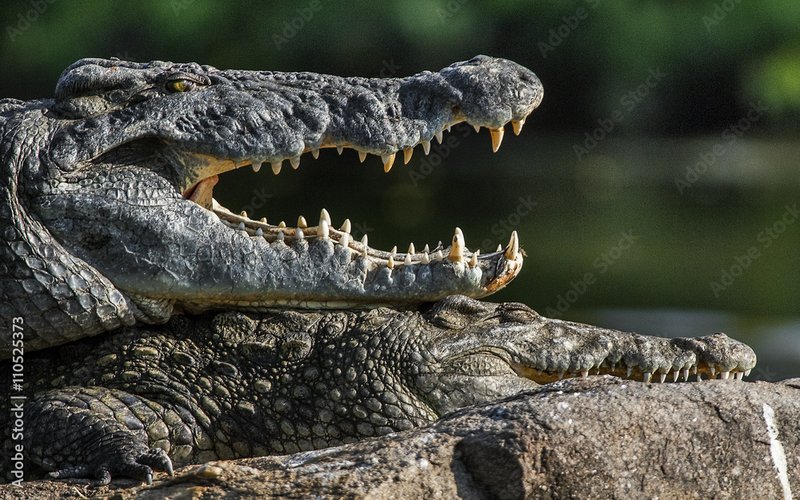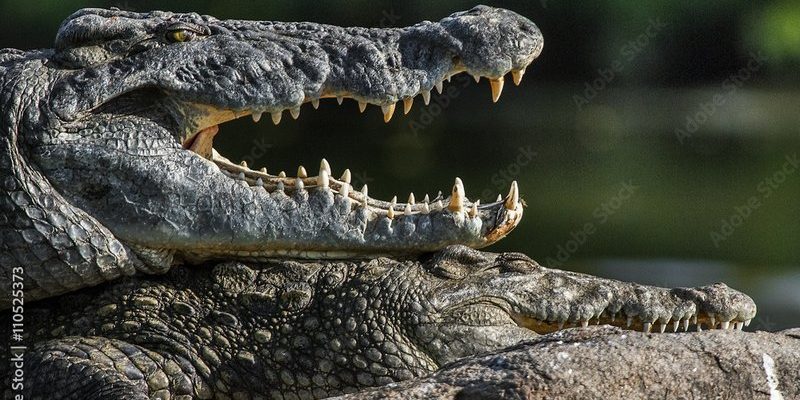
Crocodiles, particularly the Nile crocodile, have a unique way of finding a mate and raising their young. These behaviors are shaped by their environments and social structures. Understanding this process not only reveals the intricacies of their lives but also helps us appreciate the role they play in our ecosystems. So, grab a cup of coffee, and let’s dive into the remarkable world of Nile crocodile breeding and reproductive behavior.
Nile Crocodile Mating Rituals
Mating rituals in the Nile crocodile are quite an affair. When it’s time to breed, males engage in an elaborate courtship display to attract females. They’ll perform a series of vocalizations, splash in the water, and even swim around in circles to signal their interest. It’s kind of like a dance party under the moonlight—but for crocodiles!
During the breeding season, which typically occurs from August to October, males become very competitive. They may even engage in fights with other males to establish dominance over a territory. This can get pretty intense, as the stronger male will have better chances of attracting a mate. You might be wondering, why all the fuss? Well, like many animals, the goal is to pass on genes to the next generation, and securing a mate is crucial to that mission.
Once a male successfully attracts a female, they will mate, often in shallow waters. This process can last several weeks, and it’s not unusual for them to mate multiple times to ensure that fertilization occurs. It’s a tough world out there, and they’re just doing what they can to keep their lineage going.
The Nesting Process
After mating, the female Nile crocodile begins the nesting process. This is where things get really interesting. The female will search for a safe spot, usually near the water’s edge, where she can dig a nest. This is no small task; she meticulously scoops out a hole and lines it with vegetation and sand, creating a cozy home for her soon-to-be hatchlings.
Once the nest is ready, she lays between 25 to 80 eggs. This number varies based on her age and health. After laying the eggs, the female covers them up to protect them from predators. While it might seem like she’s done all the hard work, she’s not off the hook just yet. The female remains nearby, defending her nest from any threats—be it from other animals or even humans. Now, that’s some serious dedication!
After about 70 to 90 days, the eggs hatch, and this is where her maternal instincts kick in full force. The little hatchlings, called crocodilelets, make a series of high-pitched sounds, signaling their mother that it’s time to break free from their shells. Here’s the thing: she’ll carefully dig them out and help them get to the water, providing a safe passage to their new aquatic home.
Care for the Young
Once the hatchlings are out in the world, the mother crocodile’s job is far from over. In fact, her protective nature shines during this stage. Nile crocodiles are unique among reptiles because the mothers provide care for their young for several months after hatching. This is a significant investment of time and energy.
The mother will often stay close to her hatchlings, guiding them to shallow waters where they can hunt small prey. You might picture her as something of a crocodilian babysitter! While she’s fiercely protective, she also knows that they need to learn how to fend for themselves in the wild. This balance between care and independence is essential for their survival.
As the young crocodiles grow, they start to venture out on their own, learning how to swim and hunt. They’ll continue to stay close to their mother, but as they reach about a year old, they’ll begin to explore more independently. It’s a bittersweet transition, as the mother knows her little ones will eventually have to make it on their own.
Reproductive Cycle and Timing
Understanding the reproductive cycle of the Nile crocodile is key to grasping how they thrive in their habitats. The breeding season, as mentioned before, usually falls in the dry months, aligning with specific environmental cues. This timing is crucial because it ensures that food sources are abundant for the hatchlings when they arrive.
The female undergoes a cycle that leads to egg production, often influenced by factors like temperature and rainfall. These conditions impact her hormonal levels, dictating when she is ready to mate. If you’ve ever wondered why certain animals breed at specific times of the year, it’s all about survival and ensuring that the next generation has the best chance.
After mating, the eggs develop inside her body until she’s ready to lay them. The combination of favorable weather and environmental conditions plays a vital role in the successful breeding of Nile crocodiles. It’s a delicate balance, and one that has evolved over millions of years.
Threats to Nile Crocodile Breeding
Despite their adaptability, Nile crocodiles face several threats to their breeding success. Habitat loss due to human development, pollution, and poaching are significant concerns. These factors can negatively impact nesting sites and the availability of food for both mothers and hatchlings.
When wetlands and rivers are altered for agriculture or urbanization, it can lead to a decrease in suitable nesting grounds. This is where conservation efforts step in, aiming to protect these essential habitats. You might think of it like preserving a home for your family—without it, success is nearly impossible.
Additionally, the illegal trade of crocodile eggs can severely deplete local populations. When eggs are taken from nests before they have a chance to hatch, it can affect the overall breeding dynamics. Conservationists are working hard to combat these issues and raise awareness about the importance of protecting Nile crocodiles and their habitats.
The Importance of Nile Crocodiles in Ecosystems
So why should we care about the breeding and reproductive behavior of the Nile crocodile? These creatures play a critical role in their ecosystems. As top predators, they help maintain the balance between various species within their habitats. By controlling fish and other prey populations, they contribute to the overall health of the aquatic ecosystem.
Moreover, the nurturing behaviors exhibited by mothers can be seen as a form of ecological stewardship. By raising their young in a safe environment, they help ensure future generations will thrive, which is essential for maintaining biodiversity. You could say that every aspect of their breeding and care contributes to the larger picture of environmental health.
Understanding their reproductive behaviors also provides insights into conservation efforts. When we learn how these animals reproduce and survive, we can better advocate for their protection. It’s a reminder that preserving one species often means protecting an entire ecosystem—a win-win for nature and humanity.
In conclusion, the breeding and reproductive behavior of the Nile crocodile reveals a world of dedication, survival, and environmental significance. By understanding these processes, we can truly appreciate the role these ancient reptiles play in our world and why it’s crucial to protect them. So next time you hear a story about crocodiles, remember there’s a rich tapestry of life, love, and family behind their fierce exterior.

